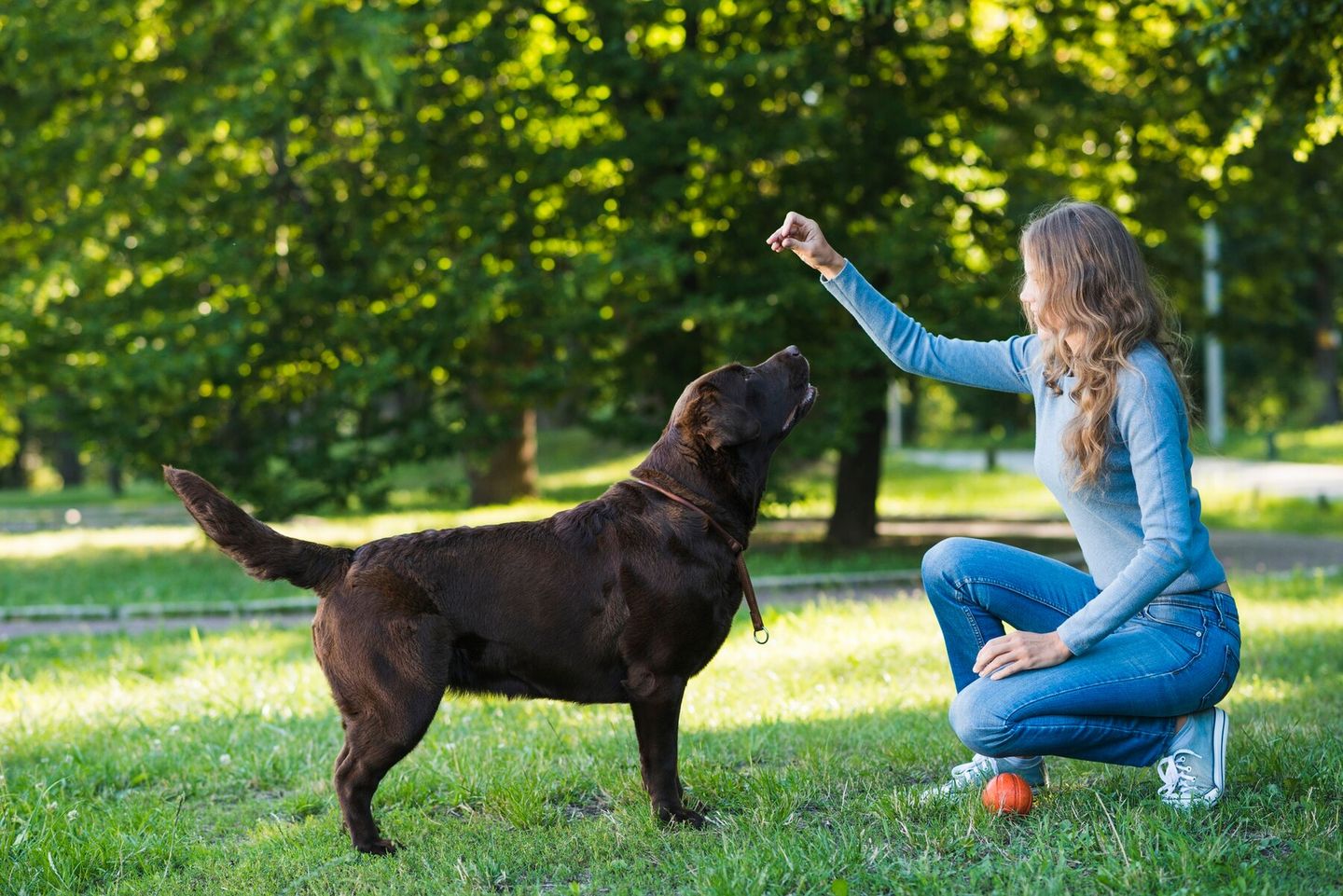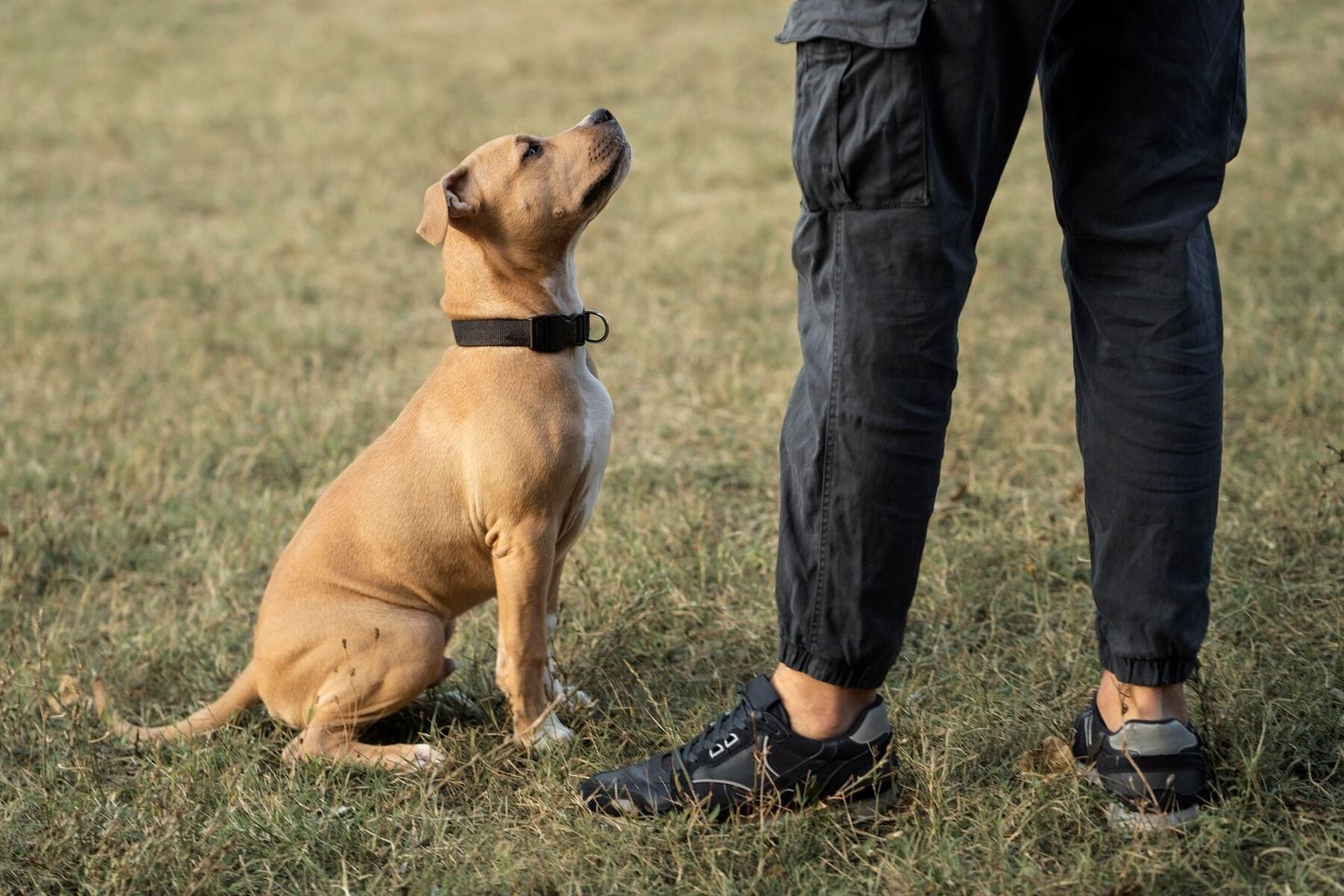Will your dog only sit if you have a cookie in your hand? It doesn’t have to be that way!
If this sounds like your dog, don’t worry—it’s a common issue, and it’s fixable! Let’s break down why this happens and how you can train your dog to respond to your cues reliably, even without a treat in sight.

Why Does This Happen?
There are two main reasons your dog might only listen to you when they see a treat:
- They don’t trust they’ll get rewarded unless they can see the reward first.
- They haven’t learned to generalize the command. In other words, they don’t understand that “sit” means “sit” in all situations—not just when you’re holding a treat or reaching for the treat bag.
Dogs are brilliant in many ways, but they’re not great at generalizing. What seems obvious to us (like “sit” meaning the same thing everywhere) isn’t always clear to them. The good news? With a little patience and the right approach, you can teach your dog to respond reliably, no treats required.
Step 1: Make Sure Your Dog Understands the Command
Before you can phase out treats, your dog needs to know exactly what you’re asking. Does “sit” mean sit immediately, or does it mean bark, scratch, wander around, and then maybe sit? Be clear and consistent with your expectations. Practice the command in a low-distraction environment until your dog responds reliably (95% of the time or more).
Step 2: Use a Reward Marker
A reward marker is a word or sound (like “Yes!” or “Good!”) that tells your dog, “You did the right thing, and a treat is coming.” Practice this by saying your marker word and immediately giving a treat. Repeat this until your dog associates the marker with a reward. This step is crucial because it bridges the gap between the behavior and the treat, especially when the treat isn’t visible.
Step 3: Gradually Remove the Treat from Sight
Once your dog is consistently sitting on command, start phasing out the visual cue of the treat. Here’s how:
- Stop showing the treat first. Ask your dog to sit without holding a treat in your hand. Instead, keep the treat in your bag or pocket. When they sit, use your reward marker (“Yes!”) and give them the treat.
- Move the treat bag farther away. Place the treat bag on a table or shelf a few feet away. Ask your dog to sit, mark the behavior, and then go get the treat to reward them.
- Hide the treats entirely. With your dog out of sight, stash the treat bag somewhere hidden where you’re training. Call your dog, ask them to sit, and then be sure to tell them “Yes!” and reward them right after they sit. This step is challenging because all the usual cues (like the treat bag) are gone, so be patient and reward generously.

Step 4: Introduce Delayed Reinforcement
Once your dog is responding reliably without seeing a treat, it’s time to teach them that rewards don’t always come immediately. This is called delayed reinforcement, and it’s a game-changer for building patience and drive to work.
Here’s how to do it:
- Ask for multiple behaviors before rewarding. For example, ask your dog to sit, then down, then spin, and then give them a treat. Use a duration marker (which is a marker that is different than your reward marker from before that just tells your dog to keep going. Be sure to use a different word like “Yup!” or “Great!”) after each successful behavior to let them know they’re on the right track but that the reward isn’t coming just yet. When you’re ready to give them their treat, use your reward marker from earlier (“Yes!”) and give them a generous amount of treats.
- Mix it up. Sometimes reward after one behavior, other times after two or three. This keeps your dog guessing and motivated to keep working.
Step 5: Incorporate Non-Food Rewards
While food is a powerful motivator, it’s not the only way to reward your dog. Over time, optimize your training by starting to incorporate other rewards like:
- Toys: A quick game of fetch or tug can be just as rewarding as a treat.
- Play: Use playtime as a reward for good behavior.
- Praise and pets: Some dogs thrive on verbal praise and affection.
The goal is to create a well-rounded reward system that keeps your dog motivated, even when you don’t have treats on hand.

Final Thoughts: Can You Stop Using Treats Altogether?
The short answer? No—and that’s okay! Rewards are a key part of keeping your dog motivated and engaged. However, you can transition from using treats every time to using them intermittently, while incorporating other types of rewards. This keeps training fun and effective for both you and your dog.
Ready to Transform Your Dog’s Training?
By following these steps, you’ll have a dog who listens reliably, even without a treat in sight. Remember, patience and consistency are key. And don’t forget to celebrate your dog’s progress—they’re working hard to make you happy, after all!
Did you find this blog helpful? Share it with your fellow dog lovers and spread the training love!

